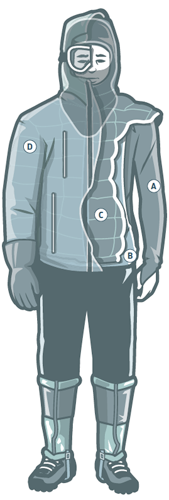Maybe I am being a little hopeful here, but I am really enjoying this somewhat cooler weather. I hope it sticks around for a bit, especially since we have some River School canoe trips planned this Fall with Sunset Valley Elementary and Sanchez Elementary. As I will be explaining to these classes, canoeing or paddling in colder weather requires different gear and preparation.
On the one hand, you want to stay warm while canoeing on the water where there is often rougher winds, while on the other you need to stay dry. Multiple reasons to stay dry, which I am sure most people know – (1) hypothermia caused by being too cold for too long (2) rashes from wet clothes rubbing (3) wet clothes weigh more than dry and thus can increase your “load” to bare. We suggest layering with quick drying clothes before canoeing and taking of layers as you see fit during your paddle. While searching for more exact advice, I came across this post by Backpacker.com. According to Backpacker.com and my own experience:
1. Stay Dry – It’s a lot better to be cold and dry than wet, mainly due to the potential for hypothermia. This also means that you don’t want to be sweating too much since sweat can keep your clothes wet and therefore incur hypothermia easier.
2. Stagger zippers, button up , and use your hood – to prevent drafts and provide a  barrier.This includes pocket zippers.
barrier.This includes pocket zippers.
3. Wear gloves when you need to – though if paddling extensively, try to avoid blistering.
This is a great guide for layering:
Layer 1 (A) No matter how frigid the temperature, wear a light, long-sleeved baselayer next to your skin. Thinner layers wick sweat better and dry faster. Also, opt for shirts with thumbholes, which keep drafts from sneaking in between your sleeve and glove.
Layer 2 (B) Next comes a thin midlayer—either wool, polyester, or a blend of the two.
Layer 3 (C) A puffy, zippered jacket with a hood. This heat trap is your best friend in frigid temps.
Layer 4 (D) A shell made of a waterproof/breathable fabric with taped seams. Size it big enough so it fits over everything else. And avoid white jackets and gear, which get lost in the snow.”
